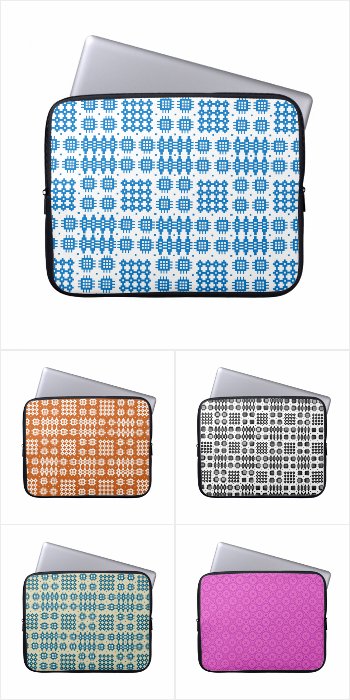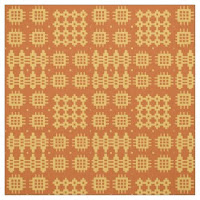I've just finished
reading 'A Life by Design', a biography of Laura Ashley, written soon
after her tragic fall, from which she never regained consciousness, at
the age of 60.
I read the book when it was first published in 1990 but at
that time, I read it from the point of view of a Laura Ashley Home
Furnishings customer, having used gallons of Laura Ashley Navy paint
in the refurbishment of my Edwardian home in Norwich. I even painted the outside
of the re-sprayed, genuine ball-and-claw-footed bath that we found in an outhouse when we bought the house.
And here's the 'Laura Ashley Navy' front door of my next (Victorian) home!
But this time around, I
read it as a designer, more specifically a surface pattern designer
with a strong interest in designing textiles for fashion and home
furnishings.
And it was as if I was
reading it for the first time. So many things jumped out at me that
hadn't really interested me back in 1990.
First and foremost, I
was quite shocked to read that Laura Ashley wasn't exactly a designer!
Neither she nor her husband, Bernard, could draw and of course, they started their business well before the days of computers!
The legendary
little 'sweater scarves', table mats and tea-towels that they printed on the kitchen table of their Pimlico flat in the 1950s, ('fixing' the colour by baking in the oven, where some fell down and burnt!), these small items had bold geometric
shapes a patterns, which was all that their rather primitive printing equipment
could cope with.
But they sold well,
because Audrey Hepburn had popularised the 'sweater scarf' in the
popular film, 'Roman Holiday'.
However, Laura was already intensely interested in tiny floral printed and striped fabrics. She had worked as a secretary at the National Federation of Women's Institutes and when she visited one of their handicraft exhibitions at the Victoria & Albert museum, she realised that women were capable of working at home to produce textiles that were of museum standard. She was particularly struck by the patchwork and scoured the shops to find suitable fabrics so that she could make her own while awaiting the birth of her first child.
As we moved through the
1960s, fashion trends changed dramatically. Out went the full skirts
with hooped petticoats and in came the mini-skirt and sharply cut
dresses and coats with geometric patterns. In case that was before
your time, you can get a flavour of the era HERE
And it was in 1968 that
Laura Ashley - or rather, Bernard, her husband, opened their first
dress shop, selling dresses that were almost shockingly different!
Bernard oversaw the printing, dealt with the marketing and business
side of things - so, given that she was not a designer, in the usual
sense of the word, what part did Laura play?
Well, she did supervise
the making up of the garments in Wales and researched patterns to use,
spending a great deal of time in libraries and museums, pouring over antique pattern
books and so on.
But Laura's essential contribution to
what was becoming a successful business venture, was her 'unique idea'!
Coming from a Welsh non-conformist background, Laura Ashley had her
'puritanical' side. But
she was also a romantic, she loved the countryside and nature and she
was more drawn to the fashions of bye-gone ages than to the current
trends. She may have had some rather naive ideas about how a working
farmer's wife would have dressed in days of yore, but her dresses
were based on earlier styles and the fabric patterns were, at least to
begin with, mainly historical.
She firmly believed
that women were more interested in dressing to look beautiful than in
following the latest fashions. And she also took the view that the
more you cover up - long skirts, long sleeves etc - the more alluring
you will be!
Put those two beliefs together and you have the classic Laura Ashley dress of the late-Sixties and Seventies.
'Pretty but Prim' would
be how I would describe those early dresses that turned the Laura
Ashley brand into household name.
I remember my first visit to a Laura
Ashley dress shop, when I was staying with my sister-in-law in Oxford
- to me it was heaven on earth! In fact I never bought a Laura Ashley
dress because I loved dressmaking and made my own in similar styles.
But I do still have a full-length Laura Ashley nightdress, complete
with pin tucks, tiny, concealed, pearl buttons, and lace-trimmed high collar and
long sleeves. It's somewhat the worse for wear now but somehow I
don't want to turn it into a cleaning cloth so it stays at the bottom of my
drawer!
Looking back, it seems
strange now that the only fashion choices at that time were limited to
'bold geometric' or 'romantic with frills'! Today's fashion trends
are far more eclectic so that you could almost believe that 'anything
goes'.
But even so, I think those two main, sharply contrasting,
trends are still around.
Alongside the 'funky', 'quirky', sometimes
bordering on 'outrageous' fashions, you only need to delve into
Pinterest or visit an online store such as Etsy to see that
nostalgic, romantic and downright 'pretty' is still as popular as
ever.
Of the two design
strands, the nostalgic, vintage 'look' is easier to live with in the
long-term. Eventually, in the 1980s, Laura Ashley branched out into
Home Furnishings. I'm only surprised she left it so long.
I used
Laura Ashley Brick Red wallpaper on the staircase, above the dado
rail, in my Victorian home in Hereford.
And the colour was the
perfect backdrop for the pictures I hung on that wall.
I also still
use a Laura Ashley tea-cosy! Like all of her products, the quality is head and shoulders above most others.
Sadly, I've never found
a good replacement for my Laura Ashley heavy cotton lace curtains, that looked
fabulous, hung over slimline, navy blue Venetian Blinds, in three different
homes, from 1987 - 2013, when they finally started to fall apart, as you can see by the hole down near the hem!
Bright, bold and
minimalist is exciting, but perhaps more suitable for clothing than
for home furnishings, which we expect to last somewhat longer than a
dress, bought and worn today, possibly discarded a few months later! That is
not to say that the more 'modern' style doesn't look great in an
office building or a city apartment.
But for a home,
especially a period home, the vintage, 'shabby chic' is much more
comfortable to live with, day in day out, for a number of years.
I'm far from suggesting
that we decorate and furnish our homes as faithful replicas of times
gone by. But our surroundings do affect our mood and some of the more
outlandish patterns currently available seem to have an almost
'aggressive' feel to them. Whereas a few 'pretty things' can soften
the edges of our daily existence.
So here are a couple of
my Home Furnishings Collections - not exactly 'Laura Ashley' but also based on floral designs and patterns -
100+ Floral Coffee Mugs
- some ready to personalize:
Click on the image
below to see the full Coffee Mug collection -
100+ Floral Pillows or
Cushions - arranged by colour:
Click on the image
below to see the full Pillow collection -
And just by the way, a
floral mug or throw pillow or cushion, would make a wonderful
Mother's Day gift or a birthday present for your mother!



































